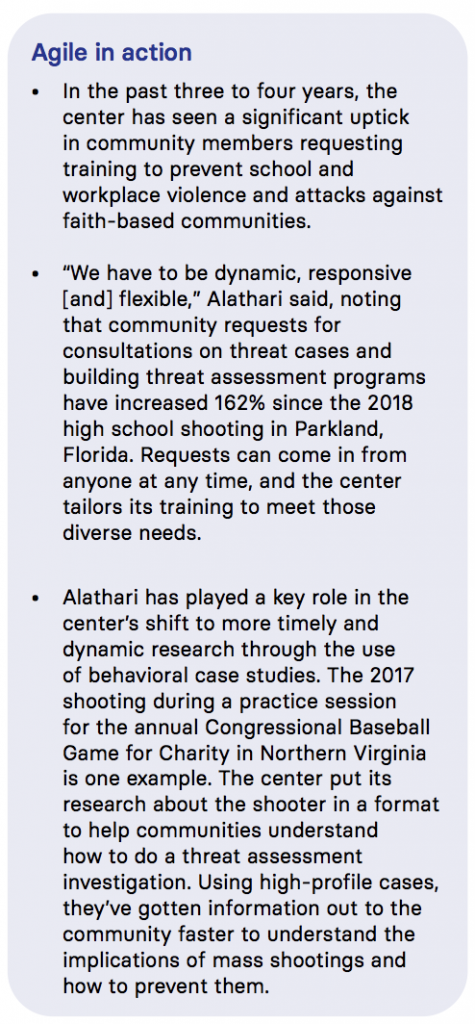Editor’s note: The success of an organization is closely tied to the quality of its leadership. In many ways, teams take on their leaders’ identity, which makes agile leadership all the more critical. It’s about creating an environment where employees can and do adapt to change because they are empowered and equipped for it.
So who are these leaders in government? We spoke with nominees and winners of the 2020 Service to America Medals, or SAMMIES, to find out. The SAMMIES are an esteemed awards program sponsored by the Partnership for Public Service that recognizes remarkable work by career federal employees. These leaders shared what agile looks like at their agencies and the lasting impacts of their work.

As Chief of the U.S. Secret Service’s National Threat Assessment Center, Lina Alathari has a passion for people and for leading with empathy. Her work reaches far beyond office walls and doesn’t fit neatly into scheduled hours.
Her focus is developing threat assessment guidelines and working with law enforcement, educators and local communities to intervene and prevent possible mass shootings in schools, workplaces and public spaces. The center’s work focuses on research and training to prevent rare, non-random violent acts that affect federal officials, law enforcement, schools and communities. 
Community impact
Alathari and her team have delivered more than 1,200 training sessions to more than 83,000 law enforcement officers, educators, mental health providers, government officials, faith-based leaders and other private organizations across 50 states. Hundreds of schools and communities have adopted Alathari’s behavior-based threat prevention protocols. They’ve even conducted training virtually during the pandemic.
Potential pitfalls
Behavioral and social science research takes time, and it isn’t always easy to understand. Although the center does academicstyle research, the findings are translated operationally, and the reports are written in practical terms for communities to understand and put into action.
Another challenge Alathari faced was funding and staffing to support the center’s increased scope in work. She created an organizational chart for decision-makers to visualize what would be required to carry out those efforts. Staffing has gone from seven people when she assumed the role of Chief in 2017, to almost 20 in the past year. She credits the strategic growth to effective communication and agile leadership.
Read more about Alathari’s efforts here. You can also check out examples of the work her team has conducted, including an operational guide to using a threat assessment model and an overview of 2018 data detailing mass attacks in public spaces.
This article is an excerpt from GovLoop’s recent guide, “Agile for Everyone: How to Improve Everyday Work Processes.” Download the full guide here.

